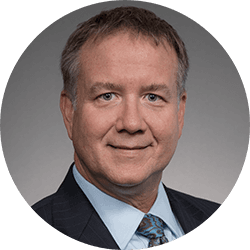
January 5, 2023 | by Admin
Op-Ed: What Communities Can Learn About Cardiac Response from Damar Hamlin Incident
By Dr. Michael Sayre, MD, Medical Director for the Seattle Fire Department and PulsePoint and Professor of Emergency Medicine at University of Washington
The unsettling collapse of Buffalo Bills safety Damar Hamlin during a Monday Night Football game brought sudden cardiac arrest to the attention of millions of Americans. Surviving sudden cardiac arrest relies on immediate medical attention, including cardiopulmonary resuscitation and AED (automated external defibrillator) use. Mr. Hamlin was fortunate in that he was quickly surrounded by medical professionals armed with an emergency action plan, and experienced paramedics joined them within minutes. Now, even with the best, most rapid care, Americans are learning that recovery from cardiac arrest takes time.
Without immediate action, sudden cardiac arrest is always fatal. For every minute someone in cardiac arrest waits without intervention, the chance of survival drops by about 10 percent. CPR buys time by pumping some blood to sustain the brain, but what is needed most is to reset the heart into a normal rhythm by delivering a shock with an AED.
This frightening incident is unfortunately common. More than 350,000 Americans suffer a cardiac arrest each year, and more than ninety percent die. Most are discovered too late to help. But we estimate that 50,000 lives could be saved each and every year with a faster, more effective response system that delivers the critically needed aid within five minutes of collapse. Even the most sophisticated emergency medical system cannot achieve a five minute response without community help.
Imagine if Mr. Hamlin had suffered his cardiac arrest at home or running in the park—he would have been reliant on nearby people to start CPR and others to bring a nearby AED. Many countries, including the United States, are developing systems to augment the 9-1-1 response and automatically notify CPR trained volunteers to bring an AED.
The PulsePoint Foundation, a nonprofit, is increasing access to bystander CPR and facilitating delivery of the needed AED. When a call comes into a 9-1-1 center that participates in the PulsePoint system and the emergency dispatcher determines that CPR is needed, PulsePoint automatically notifies nearby people carrying the free app where the patient and the nearest AED are. With the PulsePoint Respond app, you could be next door to someone suffering a cardiac arrest and be alerted to their need for help at the same time as the EMS crew.
With the permission of community leaders, PulsePoint can notify preverified responders to cardiac arrest events in private homes. Similar systems in countries like Denmark and Sweden are saving many lives by using off-duty EMS professionals, firefighters, police officers, nurses, and others to respond to help their neighbors in need.
Places with more than about a hundred people, especially stadiums, schools, gyms, churches, grocery stores, and anywhere people gather should have accessible AEDs. AEDs are only lifesaving if they can be quickly located during an emergency, not locked away someplace. The PulsePoint AED app helps build a community registry of AEDs. That registry can be connected to the 9-1-1 center so dispatchers can direct someone to retrieve a nearby AED.
Even in the best scenario, like Mr. Hamlin’s, survival can be elusive. Communities can act now to prevent the tragic deaths of young and old people from a treatable disease, sudden cardiac arrest. They must adopt programs, like PulsePoint, that involve their members in bystander CPR response and AED delivery to save an additional 50,000 sons, daughters, mothers, and fathers who would survive sudden cardiac arrest if the response system was fast enough.
Filed Under: Event, Highlights, News | Tagged With: Damar Hamlin, AED, CPR, Sudden Cardiac Arrest, Op-Ed, Michael Sayre, University of Washington, PulsePoint Respond, PulsePoint AED, AED Registry, Bystander Engagement, 911 dispatchers